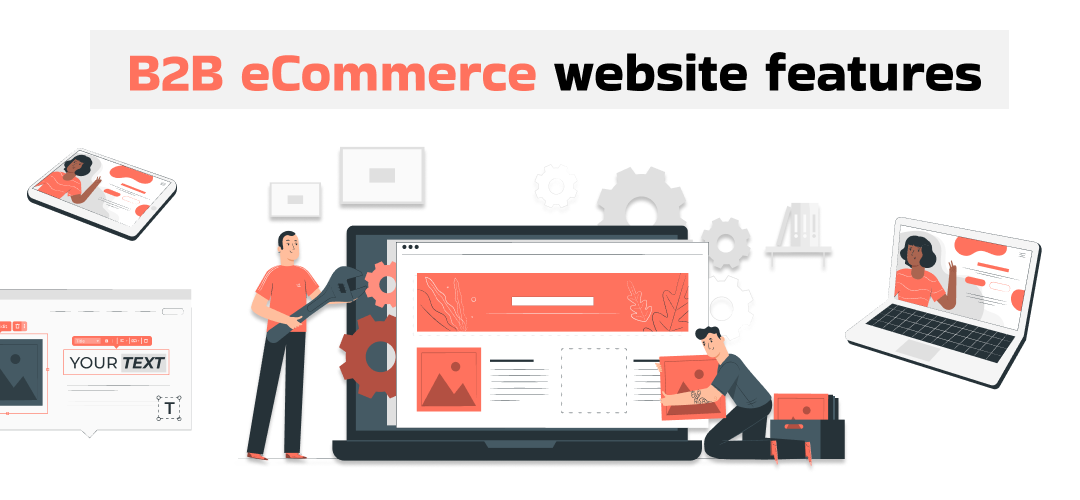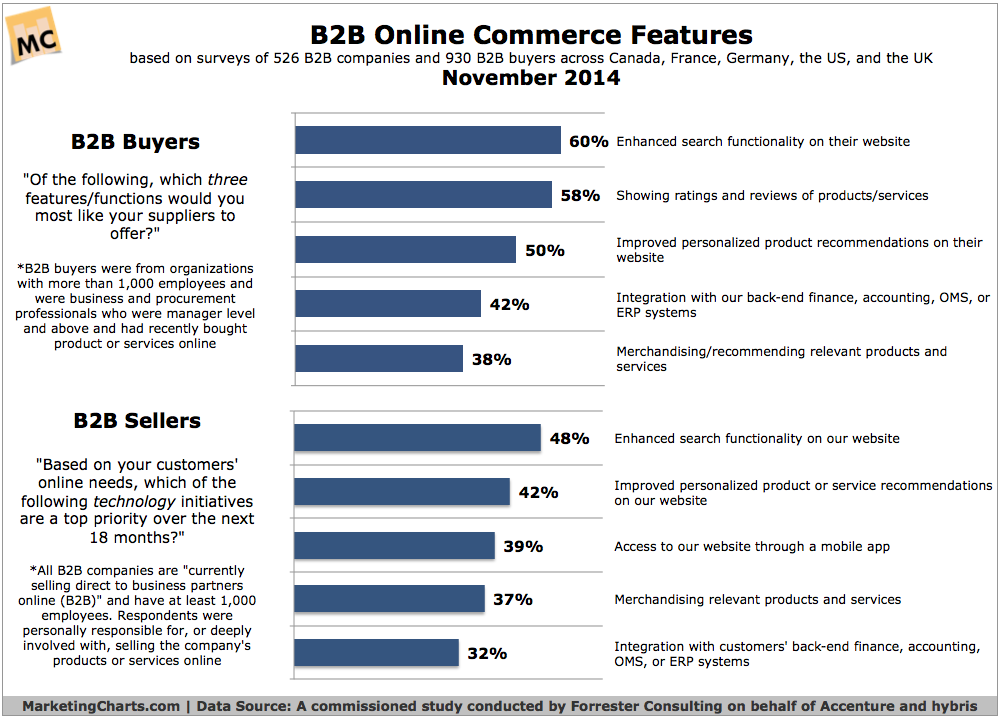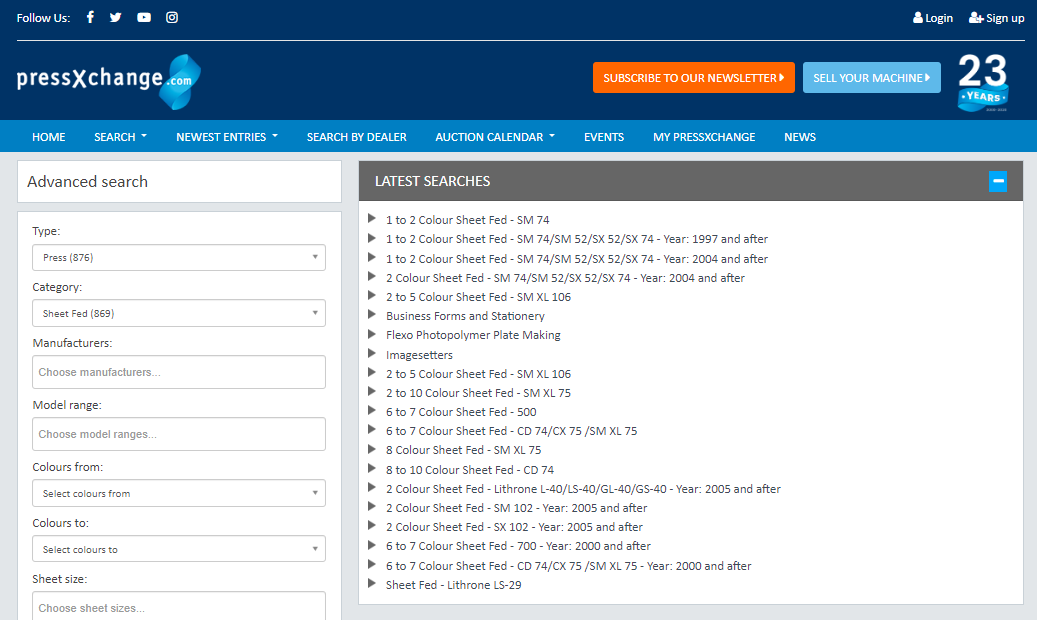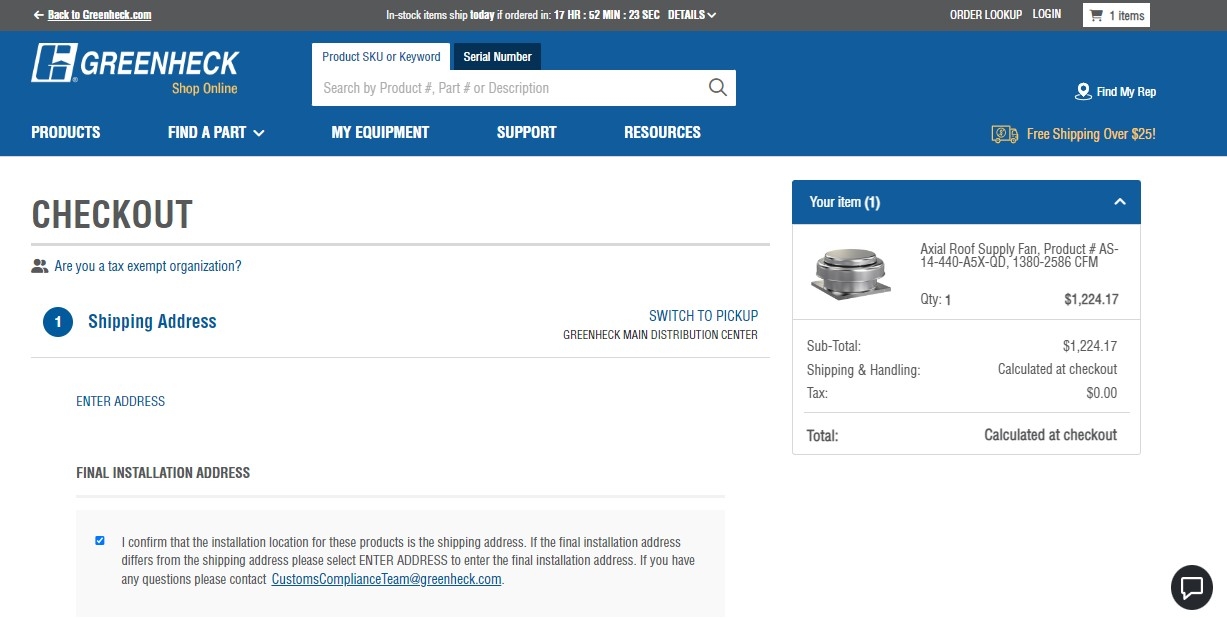B2B Marketplace eCommerce Development
Last Updated On : 24 August, 2025

With the B2B eCommerce market expected to reach $18.97 trillion by 2028, we can say for sure that competition between B2B companies is going to be sky-rocketing.
Even today more than 3/4 of B2B customers are more likely to purchase from a website than from a sales representative, and they actually expect their B2B buying process to be no different from B2C digital experience. What a puzzle, right?
You know that every unsuccessful company has its own reason for failure, but successful B2B businesses have one thing in common: they understand a B2B customer journey and use top-notch digital tools to set themselves apart from competitors.
To build a seamless customer experience and simplify business transactions, it's crucial to find the best B2B eCommerce platform that takes advantage of essential B2B eCommerce features and meet the demands of online corporate buyers.
Below, you’ll learn what top 15 B2B features will help to elevate your online store.
15 top B2B eCommerce features to elevate your online business
The B2B eCommerce market is thriving, and businesses are now more comfortable with online purchases than ever. As a result, they expect a top-notch B2B online experience.
Today a great B2B eCommerce website is more than just a virtual display of your products or services. It is a lively platform for interaction, a smooth channel for transactions, and a reliable ally in your customer’s decision-making journey.
So whether you’re upgrading your existing B2B website, building it from scratch, or already using a B2B eCommerce platform, it’s important to ensure that it supports top-notch B2B capabilities.
Besides security, performance and usability requirements, your platform should also adopt the specific B2B eCommerce features list. Let’s consider the key functions that can assist B2B merchants in meeting their customers’ needs and capitalizing on growth.
1. High customization potential
B2B purchasing processes can be complex, involving multiple stakeholders and varying from one company to another. To address these challenges, customizable B2B eCommerce portals come to the rescue.
Their flexible structure makes sure that web administrators can assign different roles and permissions to users, i.e. ensure that when customers log in, they only see items and features that are relevant to their specific business needs.
The promotions engine takes customization even further by allowing merchants to offer customer-specific discounts. In addition, users have the freedom to personalize their dashboards, and display the most important metrics and KPIs that matter most to them.
To attain this flexibility, it isn’t necessary to develop a custom B2B eCommerce platform from scratch, but rather choose a scalable solution that can be tailored to the needs of any business.
2. Multi-store and multi-vendor functionality
In addition to customization, scalability is another feature of a B2B eCommerce platform that helps businesses to expand their reach and offerings. As companies grow, the ability to add new stores or vendors without a complete overhaul of an existing eCommerce infrastructure is of great importance.
Multi-store functionality allows to create separate stores for each location, which ensures localized marketing, pricing and inventory management. In this case, administrators can oversee and manage multiple stores from a centralized dashboard. This makes it easier to monitor and maintain the integrity of the entire eCommerce ecosystem.
At the same time, multi-vendor support facilitates collaboration with multiple suppliers and partners. B2B eCommerce websites can offer vendor-specific storefronts, where various suppliers showcase their products, manage their inventories, and even handle transactions within the platform. All this can lead to more efficient order processing.
3. Product information management
Unlike B2C purchases, B2B transactions are a whole different thing. B2B buyers are no ordinary shoppers; they are experts in their respective fields. They don’t make impulsive decisions or buy based on general needs. In turn, they are much more analytical and thorough in their approach.
These buyers need all the technical details, specifications, pricing information, and product availability before they even consider making a purchase. But it’s not just about the information. B2B transactions also require trust and credibility, transparency and depth of knowledge.
A digital catalog showcases all the items available, including product images, videos and comprehensive product details. Most catalogs support product relationship management, which allows to display and recommend related products.
Moreover, there are personal catalogs that show products specifically tailored to individual customers. Additional product-to-product relationships can be based on various factors such as needs, fits, upsells, or cross-sells.
4. Advanced search and navigation
B2B customers often have to buy large quantities of items, sometimes from different categories or with specific requirements. An advanced search system can make their shopping experience easier by providing them with accurate and relevant results.
Users should be able to easily find the items they want without having to search through the entire product list. This goes beyond just having a basic search bar. If you’re looking to improve your eCommerce website’s search capabilities, here are some B2B commerce features you might want to suggest to your web developers.
- Filtering: customers should have the ability to locate a product or refine search results based on various attributes such as size, color, and availability.
- Long-tail search: the eCommerce portal should be capable of handling and interpreting long-tailed semantic searches (longer and more targeted keyword phrases), as studies have shown that this approach reduces the cart abandonment rate from 40% to 2%.
- Auto-complete: this feature not only saves time but also increases the likelihood of purchasing additional products.
By incorporating an advanced search system, B2B businesses can greatly enhance their conversion rates. This includes visual auto-complete, which displays the images of products right in the search bar.
With an easy and intuitive product discovery process, customers are more likely to make purchases and less likely to abandon their shopping carts due to frustration or confusion. This ultimately leads to a better return on investment for businesses.
5. Personalized pricing
Unlike B2C websites where everyone pays the same price, B2B businesses have the flexibility to offer tier pricing or dynamic pricing to each customer. On top of that, they also provide bundle pricing for specific product combinations and quantity discounts.
Once a customer logs in, they should be able to easily access the prices that are specifically tailored to them. Tiered pricing models offer better discounts to customers who place larger orders. Dynamic pricing is adjusted in real-time based on demand, inventory levels, and market conditions.
Since the price of a B2B product significantly depends on factors like product configuration, quantity, customer group, delivery schedule, etc., customers often choose the request for quote (RFQ) option. Once suppliers receive the RFQ, they provide a formal quotation or bid in response, which outlines the price, terms, and conditions under which they are willing to fulfill the request.
6. Option to buy in bulk
When it comes to B2B sales, bulk orders and wholesale purchases are pretty common. However, going through an entire online catalog to find all the necessary products can be a real pain. An easy solution would be to implement a bulk ordering form. This will save B2B buyers both time and hassle, and make the whole process much smoother.
When creating a bulk order form, make sure customers can easily add products using either the Part Number or SKU. Additionally, they should be able to indicate the desired quantity for each item. Once the form is filled out, it should automatically redirect customers to the checkout page.
7. Streamlined checkout
Unlike consumer-oriented eCommerce, B2B checkouts involve more complex transactions due to larger order volumes, customized pricing and business-specific requirements.
Its key components are as follows:
- User authentication: B2B users need to log in or authenticate their identity to access the checkout. This ensures that only authorized personnel from the purchasing organization can place orders and manage account-specific information.
- Shipping and delivery options: B2B buyers have specific shipping requirements, such as delivery to multiple locations or specific shipping carriers. The checkout feature allows users to select preferred shipping options and specify their delivery instructions.
- Payment methods: B2B websites offer various payment methods, such as ACH payments, credit terms, purchase orders, invoices, and credit card payments. Buyers can select the payment option that aligns with their company’s financial processes.
- Order summary: The checkout page lists all items, quantities, prices, and any applicable taxes or fees.

- Approval: The checkout process may include approval workflows, where designated personnel review and authorize the order before it is finalized.
- Order confirmation: After confirming the order, users receive an order confirmation page or email. This serves as a receipt and includes order details, estimated delivery dates, and contact information for customer support.
- Account management: B2B checkout often integrates with account management features, allowing users to manage their account details, addresses, and payment methods. This is especially useful for repeat orders.
- Order tracking: B2B websites usually provide post-checkout order tracking and status updates, enabling buyers to monitor the progress of their shipments and access historical order information.
8. Quick reordering
Quick and easy reordering is one of the most important features of B2B eCommerce. It allows registered B2B customers to replicate any of their previous orders.
Once the user chooses a past order, quick reordering duplicates the items and quantities from that order into the current shopping cart. Thus, buyers don’t need to search for and add each product individually.
While this feature simplifies the B2B buying process, it also allows users to make adjustments. Customers can modify quantities, remove some items, or add additional products to the order before proceeding to checkout.
In some cases, B2B eCommerce websites offer the option to set up recurring orders, where certain products are automatically reordered on a predefined schedule, which saves time, reduces the risk of errors and promotes the efficient restocking of essential products or services.
9. Automatic tax calculation
If you’re running a B2B eCommerce site, chances are high that you’ll need to designate certain products, customers, or even an entire group of customers as tax-exempt or non-taxable.
First of all, this feature ensures that your business complies with all relevant tax laws and regulations, reducing the risk of fines, penalties and legal disputes. Automatic tax calculation integrates with updated tax databases and local tax regulations, ensuring that taxes are computed in real time as customers make purchases.
The system takes into account the geographic location of both the buyer and the seller, the shipping address and the origin of the product, which can affect the tax rate applied. In many cases, different products or services may be subject to varying tax rates or exemptions.
It’s possible to automate the calculation of taxes and shipping costs through popular third-party services: Avalara, FedEx, UPS, etc. These services also provide documentation help, as well as labeling and pickup for your shipments.
10. Real-time inventory
This is a must-have B2B portal feature that provides customers with real-time updates and the most accurate information. It also gives a comprehensive view of the website’s inventory, making it easier to manage daily business operations.
With real-time updates, product listings reflect the current stock levels. This prevents customers from browsing or ordering products that are out of stock. As soon as an order is placed or a product is restocked, the inventory count is immediately adjusted, reducing the risk of over-selling or backorders.
B2B eCommerce websites can send notifications to customers when stock levels are running low or when products are back in stock. This is particularly useful for businesses dealing with essential or regularly purchased items.
11. Customer segmentation
In B2C, customers are usually treated the same way. However, B2B companies need to categorize their customers into groups. This helps businesses to establish prices, minimum order requirements, and specific content (such as promotions, shipping, and payment options) for each segment.
Businesses can easily categorize their B2B customers by their profiles, such as geographical location, order volume, catalog selection, reorder frequency, and the quantity of products they order.
Final thoughts
Now that we’ve explained the features needed for a B2B platform, how do you choose the right eCommerce software? While it's good to have this features list combined in one product, it becomes more important to find a solution that will serve your needs in the long run.
Take your time to better understand your business requirements, your customers’ needs and your development strategy for the future. Once you get the full picture and set your goals, look for a flexible and scalable B2B eCommerce platform like nopCommerce.
That way you can be sure that you’ll get all the essential B2B features but we’ll be able to adopt new integration and customization options whenever you need.
